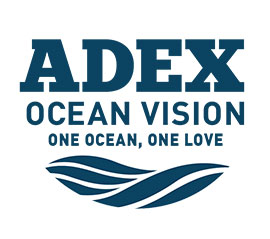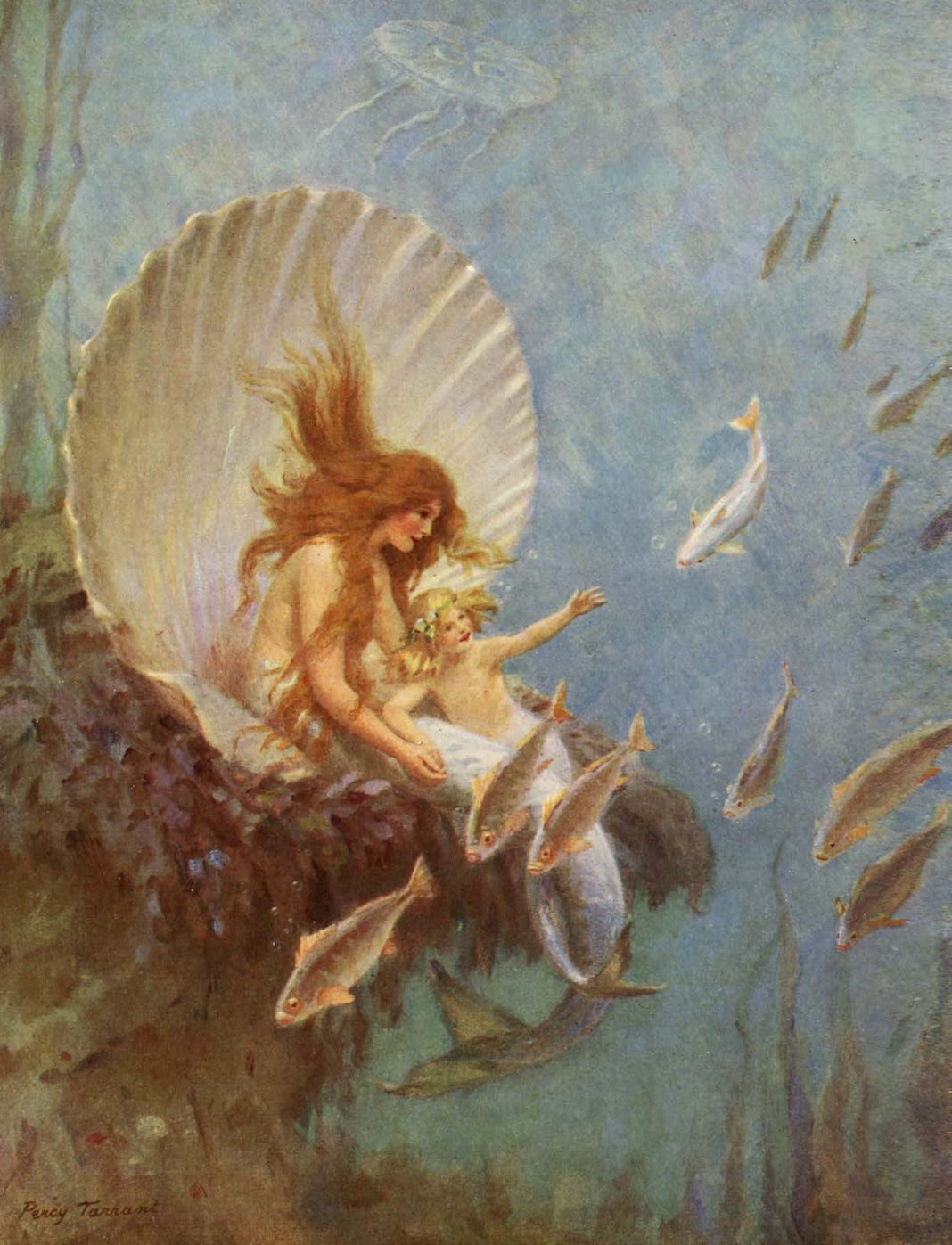Article extracted from Asian Diver Issue 03/2018 (113)
Text: Patricia Furtado de Mendonça
There is no mythology or religion in the world that does not tell of how life originated on Earth. In all of them, there are references to the primordial ocean, where it is believed the first forms of life sprung from. One need only see the abundance of symbolisms that originate from the ocean’s most diverse narratives to realise its mysterious allure. It is no surprise, then, that amid the many mythological creatures of folklore and legend, the mermaid is among those that provokes the most curiosity and interest – she brings us back to our past, reminding us of our aquatic genesis before we were born into the terrestrial world.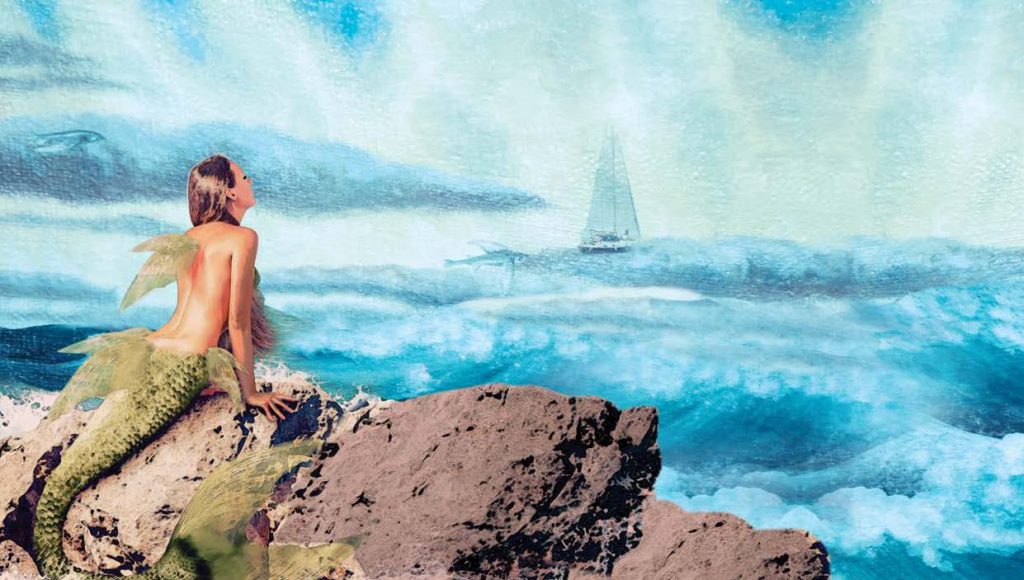
MERMAIDS AND SIRENS
Mermaids and sirens are not the same creature, even though it has become commonplace to use both terms when referring to the same being. The etymology of the word “siren” is uncertain, but some scholars claim that it derives from the pre-Greek term seirá, which means “rope”, “to tie”, “to fasten”. Hence, it refers to the sense of someone who binds and captures. In the case of sirens, this takes place through their magical chanting. Other scholars believe that this name comes from the Ancient Greek word seirén, which means “enchanting”.
In Greek mythology, the sirens were three nymphs who were servants to Persephone, the queen of the underworld. When Persephone was abducted by Hades, Demeter, Persephone’s mother and the goddess of harvest and fertility, turned the three nymphs into winged beings, half woman, and half bird, so they could locate her daughter more easily. After failing to find Persephone, Demeter punished the nymphs and did not lift the spell. They ended up on the island of Anthemoessa, luring passing sailors with their seductive chanting. Beguiled sailors ended up stranded on the island till they perished. As such, the sirens are said to be creatures that spread death and destruction.
The word “mermaid” is a compound of the Old English “mere”, meaning sea, and “maid”, meaning young woman. These are legendary aquatic creatures that appear, since antiquity,
in different folkloric and mythological traditions around the world, usually represented as beings that are half woman and half fish. They are often mistaken for the Nereids of Greek mythology – kind and beautiful sea nymphs and deities who are often depicted mounted on dolphins with a half-fish, half-human body. Some scholars claim that mermaids originated from these creatures.
Nowadays, when one mentions a mermaid, the first image that comes to mind is that of
a very beautiful woman with long hair and an ample bosom, often displaying sensual behaviour. The fishtail – more precisely, that of a cetacean – concludes the seductive image of this creature, which invites humans to dive into the water with their sweet song.
At some point in history, these two figures merged into the same creature, now more remembered by the typical characteristics of mermaids. But while the siren is a winged creature seen as treacherous and dangerous, the mermaid is an attractive and enchanting aquatic being. It was this union that allowed their stories, with countless variations, to endure over the centuries.

ATARGATIS: THE FIRST MERMAID
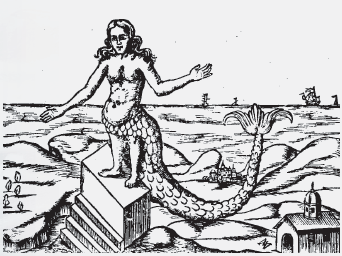
Mesopotamian mythology and culture is filled with anthropomorphic beings, represented in reliefs, stories and coins. One of the first creatures with both human and fish characteristics is the Sumerian water god, Enki, who came to be known as Ea in Babylon and was later called Oannes by the Greeks. He took the form of an amphibian human and was portrayed in several different ways.
However, the figure that most interests us is Atargatis, the mermaid goddess. This amphibian figure begins to appear around 1,000 BC and possesses diverse representations: fish from the waist down and woman from the waist up; a fish’s body with the head of a woman; a woman’s body with the tail of a fish. As a goddess of fertility and protection, she had many sanctuaries built in her honour, usually with pools filled with carp – a sacred fish that, in many cases, could only be touched by the priests in charge of the services in Atargatis’ honour.
Some scholars claim that Atargatis is the continuation of other goddesses from the Bronze Age, such as Atirat, Anat and Attart. At first, she was often worshipped in northern Syria, especially in Hierapolis. Later, her worship spread to all of Syria, then to northern Mesopotamia and the whole of the Roman Empire. She gained notoriety in Greece, where she arrived in the late fourth century BC and was called Derketo or Derceto. Syrian merchants, who carried statuettes of her for good fortune, were responsible for her popularity. She became important all over the Roman Empire (including Egypt), where she came to be known as the Syrian goddess.
In time, certain deities of previously independent cults and mythologies merged. With syncretism, Atargatis was confounded with other goddesses, such as Aphrodite. She was then called the goddess of Nature. Eventually, she took on all the aspects of protection that water entails in life, thereafter being known as the goddess of fertility.
MERMAIDS BETWEEN THE 4TH AND 16TH CENTURY

Mermaid figures appear in artefacts all over the world with different characteristics that often follow local tradition. In the West, the amphibious figure gained ground over the winged Greek figure, despite the previous amalgamations. This is also owed to the replacement of pagan beliefs by Christianity, which saw these seductive creatures as dangerous and amoral – at times comparing them to prostitutes. They could not, then, be winged creatures, as that would give them divine characteristics and bring them closer to God. As such, they lost their wings, left the heavenly paradise and were cast into the waters, gaining their fish tail. Merman and other strange beings that had a mix of different human and aquatic features also emerged.
From around the 14th century onward, mermaids were pictured holding a comb and mirror, pointing towards their vain and seductive nature. The mirror was considered a magical object attributed to an impure woman, as it was useful to contemplate the face of death or to worship the devil.
LIVE MERMAIDS
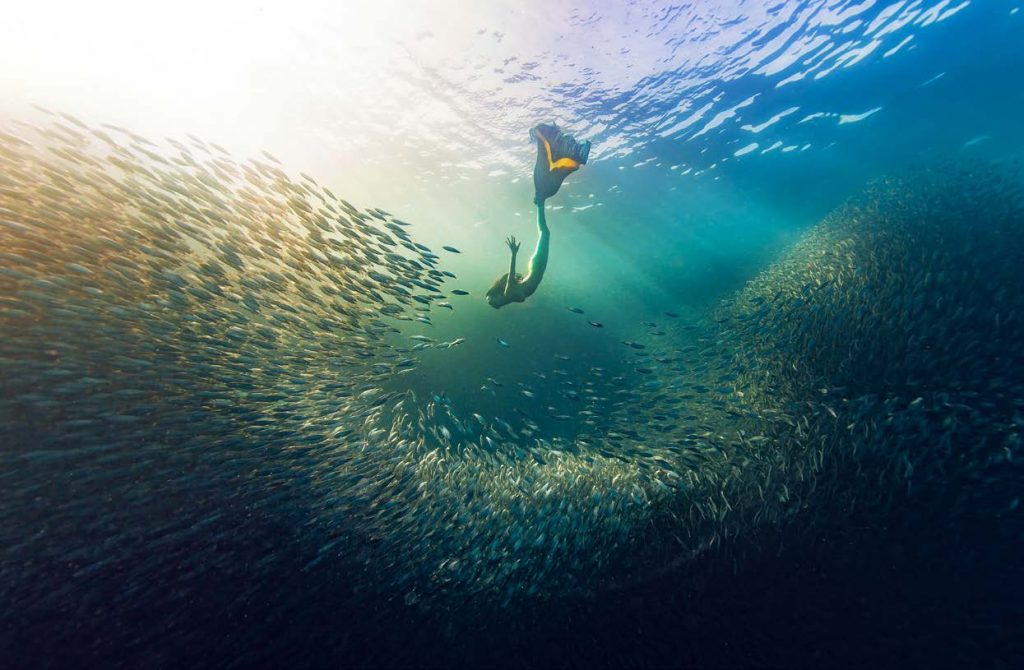
Weeki Wachee can be considered one the pioneers that introduced the concept of a live mermaid show. While the US was the first to commercialise mermaids through classes, underwater shows, filming or photography, this trend has now reached the rest of the globe. In South America and Europe, there are already countless mermaids entering the market and innovating new services such as party appearances and casino shows.
Asia is not missing out on this trend either – one need only look at the prominence of mermaids in one of the largest local ocean festivals, Singapore’s Asia Dive Expo (ADEX), which has now expanded across the continent. Mermaids have come to be a large part of ADEX, with featured performances and talks by the mermaids as ambassadors of the ocean.
As the market grows, “mermaiding” is rapidly becoming a popular hobby, and mermaid schools are popping up all over. With the potential risks involved in the sport, interested individuals must be careful to enroll in schools with comprehensive curriculums and quality education, such as Mermaid Federation International (MFI).
But there is more to this movement than just the commercial side. The desire to become a mermaid (or merman) stems from much more than the glitz and glamour: The call of the ocean is strong, and a yearning to reconnect our being with the water is gradually resurfacing. There is more to becoming a mermaid than learning how to pose for the camera or swimming beautifully underwater. A large part of the training is learning how to physically and mentally reconnect with the water.
MERMAIDS OF THE OCEAN
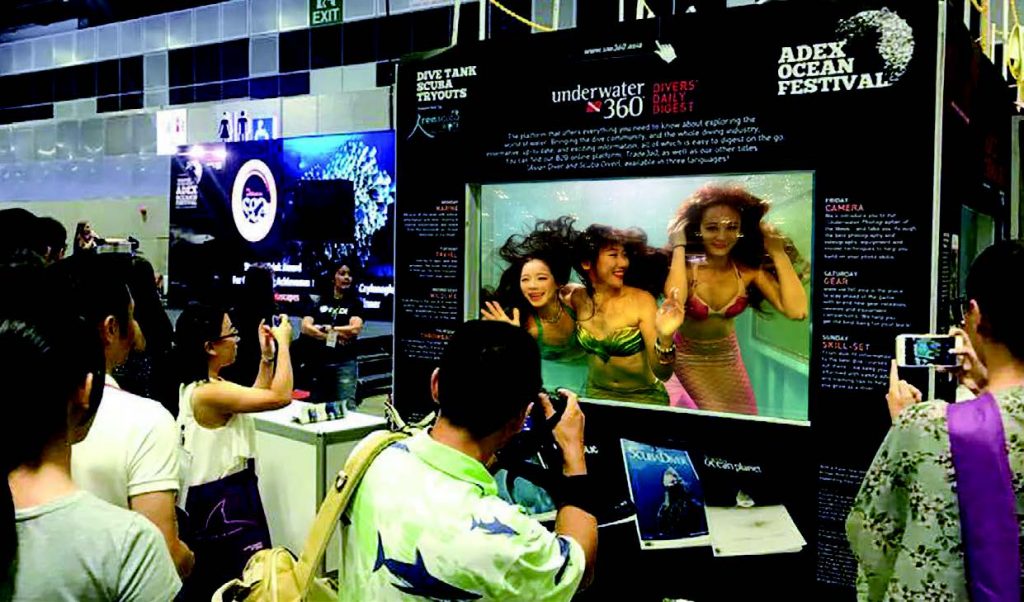
We know that the health of our seas, rivers and lakes is in danger – both fauna and flora face multiple human-induced threats. In the last decades, mermaids have become ambassadors of the oceans, and are at the forefront of conservation projects related
to marine pollution, overfishing, and various other threats to marine life.

Mermaids represent the creatures born of the ocean, but unlike actual marine life, they can voice out important messages of conservation. The mermaids of today have gained much visibility in mass media, and they are now becoming a universal trend. But it’s much more than that: They are here to aid us in preserving our planet with the message they bring.
“The desire to become a mermaid (or merman) stems from much more than the glitz and glamour: The call of the ocean is strong, and a yearning to reconnect our being with the water is gradually resurfacing”
 Patricia Furtado de Mendonça is the founder of Acqua Mater, an organisation that believes in reconnecting us with the water. She is also the ambassador of Mermaid Federation International, an organisation devoted to mermaid training and encouraging the pursuit of personal development, independent spirit and self-awareness for women.
Patricia Furtado de Mendonça is the founder of Acqua Mater, an organisation that believes in reconnecting us with the water. She is also the ambassador of Mermaid Federation International, an organisation devoted to mermaid training and encouraging the pursuit of personal development, independent spirit and self-awareness for women.
Like what you’ve read so far? Check out our LIVE! Panel Discussion on the Journey in Transforming Mermaiding into a System tomorrow, 14 May 2020, at the following times:
Singapore – 5PM / Sydney – 7PM / New York – 5AM / London – 10AM / Paris – 11AM / Tokyo – 6PM / Mumbai – 2.30PM / Sao Paolo – 6AM
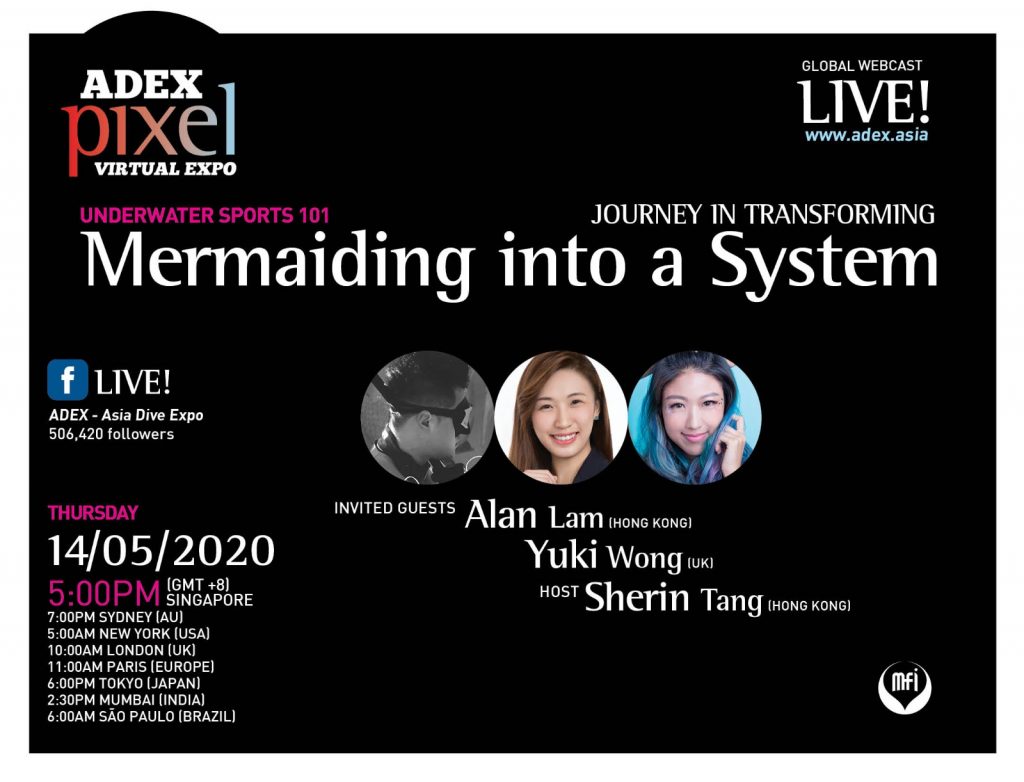
Suetzi Tang (#HongKong)
ADEX Ambassador for Mermaid, Hong Kong
Sherin Tang, Miss Scuba International (Hong Kong), ADEX Mermaid Ambassador (Hong Kong) and second runner-up of the 2017 ADEX Mermaid Challenge, is an actress and performer with a glowing stage record. Previously a backup dancer for Hong Kong stars such as Aaron Kwok, Leon Lai, and much more, currently an actress and hostess in movies, musicals, and TV shows. Sherin now promotes mermaids, freediving, scuba diving, and marine conservation through her book on her ocean adventures as a mermaid. Sherin also took part in a TV show ‘Mermaid’ which broadcasted on Guangdong Radio and Television in 2018 Summer. Furthermore, she took part in a microfilm shot by Kent Yeung about marine conservation in HK called ‘Dive. Hong Kong is shown in ADEX too.
Alan Lam (#HongKong)
Founding Director of MFI Mermaid Federation International
You can call him an educator, a person that dedicates his life in educating and inspiring people around the community. Started off from the diving industry, Alan was certificated as both scuba diving and freediving instructor in various systems and became the youngest AIDA freediving instructor of Hong Kong in 2015. In the same year, he placed his passion and love towards the underwater sports industry and began the journey in founding Mermaid Federation International (MFI), which aims to provide quality and safe professional mermaid courses for all. Namely, our Mermaid Godfather.
Yuki Wong (#UK)
Director of MFI Mermaid Federation International
“Let’s go plastic-free! No more straws, guys!” is one of the sentences that Yuki says the most. She is a well-educated individual in studying the United Nation’s goals, from MDGs to SDGs, also has been invited to do numerous MDG/SDG training in the past few years. She engages herself mainly in two main fields: women empowerment and environmental protection. For her, Mermaids, are aquatic creatures with the upper body of a human and tail of fish. We are the bridge between ocean and human, as an Ocean Ambassador to raise awareness in ocean conversation. As well as to promote a woman’s independence and pursuit of self-awareness.

